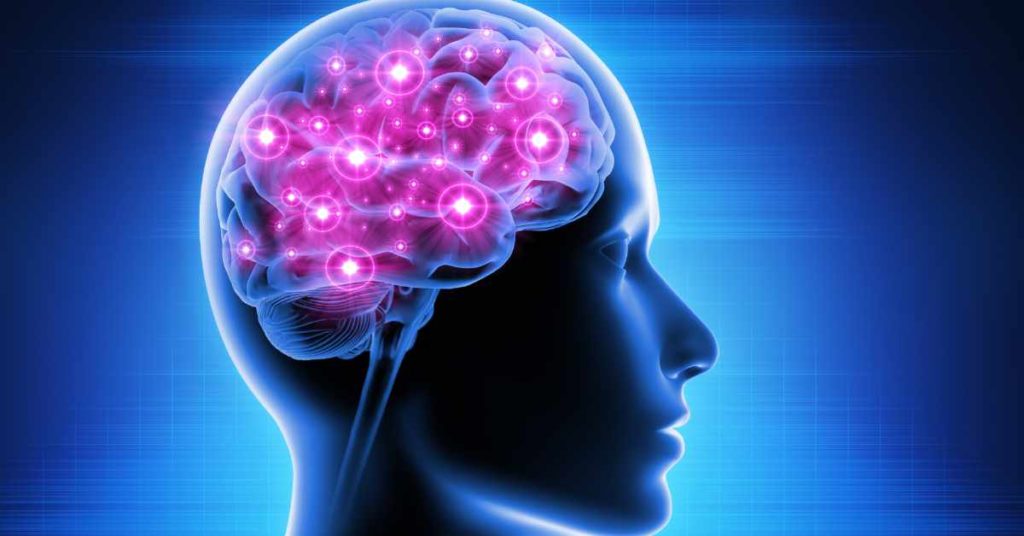Table of Contents
Is there an interaction among Connective Tissue, Neurotransmitters and Mental Health?
Connective tissue is a structure of the human body. The structure and functions are far from fully understood. Its specific weight is up to 80% of our body weight. Many functions of the human body depend on the state of the connective tissue; it is the connecting link of all the tissues of our body. (Research article: Connective tissue and the immune system: parts of the holistic).
- Connective tissue is also the link between our body and psyche, carrying out the mind-body connection. In other words, through the elements of connective tissue, our mind, which generates emotions, influences the state and function of our internal organs. How does it work? How do emotions arise? At this stage, it is necessary to mention neurotransmitters.
- Neurotransmitters are chemical messengers responsible for transmitting signals in the nervous system.

They are produced and released by nerve cells and released from axons, processes of nerve, and bind to specific receptors on other nerve cells, thereby transmitting a signal from one cell to another. They play a crucial role in many physiological processes, such as movement, sensation, mood, and thought. Some examples of neurotransmitters include dopamine, serotonin, and GABA. Imbalances in neurotransmitter levels can lead to neurological and psychiatric disorders such as depression and Parkinson’s disease.
- Emotions and neurotransmitters are closely related, as neurotransmitters play a key role in regulating emotional states. Different neurotransmitters are associated with specific emotions, and imbalances in neurotransmitter levels can lead to emotional disturbances.
For example, serotonin is known to play a role in regulating mood and is often associated with feelings of well-being and happiness. Low serotonin levels have been linked to depression.
Similarly, dopamine is a neurotransmitter that is associated with pleasure and reward. Low levels of dopamine have been linked to depression and other mood disorders.
GABA is a neurotransmitter known to have a calming effect, and low levels are associated with anxiety.
It is important to note that while neurotransmitters are involved in regulating emotions, they are not the sole determinants of emotional states. Emotions also involve the activity of other neural networks in the brain, as well as the influence of environmental factors and personal experiences.
What do emotions mean? Emotions are energy
There are positive (love, joy, happiness, gratitude) and negative emotions (fear, envy, guilt, resentment, anger), and certain energy frequencies correspond to these emotions. Positive emotions are high-frequency energy waves that correspond to the true nature of the frequency of our body, which, passing through the connective tissue from our head until the feet, energize all our organs, tissues, and every cell of our body and start all the biochemical processes necessary for the healthy existence of our organs.
Negative emotions are low-frequency energy waves that do not match the human body’s energy conductor. That is why obstacles arise in various organs during the passage of these types of energy waves through connective tissue. If an obstacle arises, the energy does not pass further. It stagnates, leading to various pathological changes in the cells and tissues of the organ and, in the future, to the development of an inflammatory-destructive process.
Violation of the structure and function of the connective tissue as a main body´s energy conductor plays a huge role in the development of chronic diseases of the internal organs.
In medicine, this is clearly underestimated. There are two ways of Mind-Body interaction: the first – is that our emotions influence positively or negatively our internal organs, and another way: our internal organs, through the receptors located in the connective tissue, influence our mind.
One of the important aspects of the functioning of the connective tissue is the presence of almost all types of sensory nerve receptors (Interoreceptors) located in the structures of the connective tissue. That is, almost all the sensations of our body, pain, we perceive due to the irritation of these receptors.
Interoreceptors of the connective tissue transmit impulses from internal organs. When an organ enlarges due to inflammation, stretching the capsule gives a feeling of aching, bursting pains of varying intensity. When sensitive endings are irritated in the connective tissue structures of smooth muscle fibers, spastic pains occur.
The brain is a system that translates information received from receptors into the language of emotions that we understand. And each organ has its own emotional coloring. That is, impulses coming from internal structures and organs are transformed by the brain into emotions.
The brain’s main structural and functional unit, along with neurons, are synapses – contacts between nerve cells through which a signal is transmitted. The main role in this process is played by neurotransmitters.
Here are several main neurotransmitters that regulate our body’s work – from the movements of the fingers to the feeling of pain or happiness and joy.

Dopamine
This neurotransmitter causes a feeling of satisfaction, which affects motivation and learning processes. Dopamine neurons are located in three areas of the brain: the hypothalamus, the substantia nigra, and the ventral tegmentum. Depending on the location, their functions differ. Neurons in the hypothalamus regulate libido, aggressiveness, and food motivation. The mobility of a person depends on the amount of dopamine in the substantia nigra: how willingly he goes in for sports and other physical activity. Also, this neurotransmitter is extremely important for cognitive activity: dopamine, produced in the ventral tegmentum, is responsible for the speed of information processing and creativity.
Norepinephrine
Norepinephrine, also called Noradrenaline, functions as both a hormone and neurotransmitter in the brain and body. The substance is formed from tyrosine, one of the 20 amino acids that make up food proteins. The top food is high in tyrosine: sesame seeds, cheese, soybeans, meat and poultry, fish, and nuts.
Norepinephrine is the main mediator of the sympathetic nervous system. This part of the brain and nerve fibers controls the internal organs during physical and emotional stress and high energy consumption. In particular, norepinephrine controls human motor activity: it is because of it that we find it challenging to sit still during stress. It can accelerate and slow down the processes occurring in the body: activate the work of the heart muscle, narrow the blood vessels, or, conversely, relax the walls of the bronchi and intestines.
These multidirectional changes depend on the type of receptors that respond to the appearance of norepinephrine. It is also produced in the brain: the neurotransmitter is involved in the processes of learning and remembering information. In addition, it can reduce the level of anxiety and increase aggressiveness.
Acetylcholine
This neurotransmitter is produced in neuromuscular synapses and is responsible for movement. If you move your finger, the brain sends an electrical signal to the muscle nerves, where acetylcholine is released, which causes the muscle to contract. The same receptors that acetylcholine acts on also perceive nicotine. This toxin, found in tobacco leaves, causes convulsions in insects, thereby protecting the plant.
Acetylcholine is also responsible for the functioning of the parasympathetic nervous system, which controls the internal organs. It can both relax them (constrict the pupils and bronchi, slow down the heartbeat) and make their work more intense – in particular, acetylcholine activates the gastrointestinal tract. In addition to peripheral functions, acetylcholine is responsible for the brain’s functioning: it can lower the excitation level and activate the brain.
Serotonin
Serotonin is both a central nervous system mediator and a tissue hormone: we can find it in various organs and tissues. In the brain, serotonin has an inhibitory function and is an important component of the sleep centers. It can also control the overall level of pain sensitivity: people who easily tolerate pain produce a lot of this substance. But the most famous function of serotonin is the control of negative emotions.
The neurotransmitter suppresses the centers of the brain associated with resentment, sadness, and disappointment. Problems in the work of the serotonin system entail depression, which is treated with the use of certain drugs – they block the mechanism of inactivation of this neurotransmitter, which under normal conditions is needed to stop signal transmission.
Glutamic acid
It is one of the most important mediators in the brain: glutamic acid, or glutamate, is secreted by about 40% of neurons. Glutamic acid is an amino acid that plays several vital roles in the body. It serves as a neurotransmitter, helping to transmit nerve impulses in the brain. It is also involved in the metabolism of proteins and serves as a source of cell energy. Additionally, glutamic acid is a precursor for the synthesis of other amino acids, such as GABA and glutamine, which are also crucial for brain function.
The binding of glutamic acid to the receptors of neurons leads to their excitation. With its help, information related to sensory, movement, and memory is transmitted. We get similar amino acids from food: glutamate is part of many proteins. Thus, we eat 5 to 10 grams of glutamate and glutamine daily. However, dietary glutamate hardly enters the brain: the blood-brain barrier that surrounds the vessels that permeate the brain tightly controls the movement of chemicals from the blood into the nervous system.
Resume: 8 Ways to create positive emotions
In our fast-paced, high-stress world, more and more people report issues with chronic stress, anxiety, and depression. These types of emotions or mental conditions cause pathological processes in the visceral organs or tissue of the body through the insufficient synthesis of certain neurotransmitters. But there is no need to specially feed the brain: neurons independently synthesize these substances right at the endings of axons and release them to transmit information.
- The only way to remain healthy – is to create positive emotions.
- There are several ways to help a child develop and grow positive emotions:
- Encourage positive self-talk: Help the child understand the power of their thoughts and teach them how to talk to themselves positively and encouragingly.
- Show love and affection: Express love and affection regularly through hugs, kisses, and words of praise.
- Model positive behavior: Children learn by example, so it’s important to model positive behavior and emotions.
- Encourage social interactions: Encourage the child to interact with others, make friends and be part of a community.
- Encourage positive activities: Encourage the child to participate in activities that they enjoy and that make them feel good.
- Create a positive environment: Create a warm, supportive, and positive environment in the home where the child feels safe to express their emotions.
- Encourage gratitude: Teach the child to appreciate the good things in his life and express gratitude for them.
- Help the child to understand and manage their emotions: Teach the child to recognize and label their emotions and develop strategies to manage them healthily.
It’s also important to remember that every child is different and may need different strategies to develop positive emotions. It’s important to be patient and understanding and to work with the child to find what works best for them.
In the following article:
You may not realize that all of these signs, such as chronic stress, anxiety, and depression, are clear indicators of problems with your GUT health. It’s hard to believe our GUT and the bacteria in it could affect our mental health, but this is precisely what new research shows.
The ENS – Enteral Nervous System (or “Second Brain”) is responsible for balancing our mood, reducing stress/anxiety, and keeping our overall mental health in check! The collection of neurons in the ENS comprises the same cellular tissue as the brain and holds the magic key to influencing our thoughts and feelings.
The question is: the GUT bacteria influence the function of our brain and, as a consequence, the conditions of our mental health or the inverse?
In the following article, I will discuss what is primary and what is secondary in ensuring a healthy mental-body interaction.





